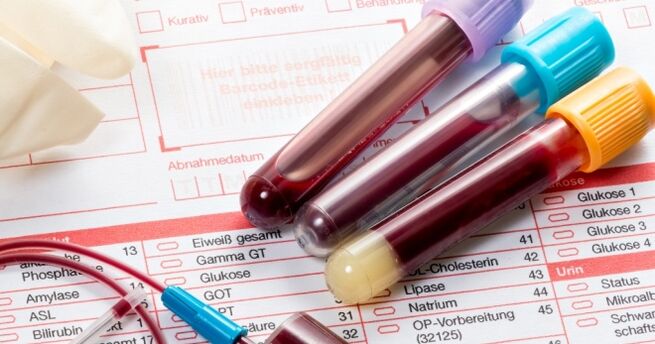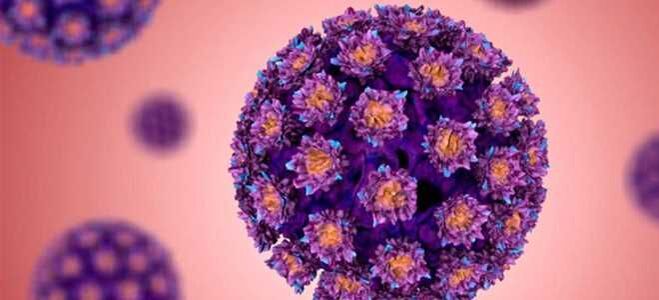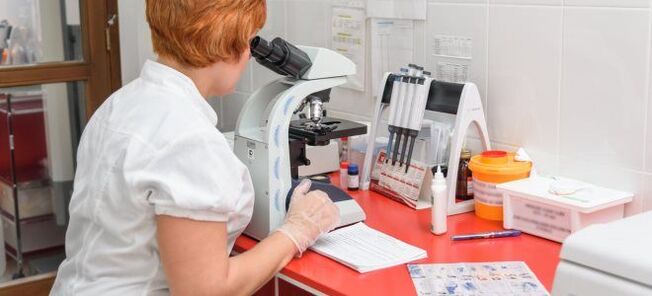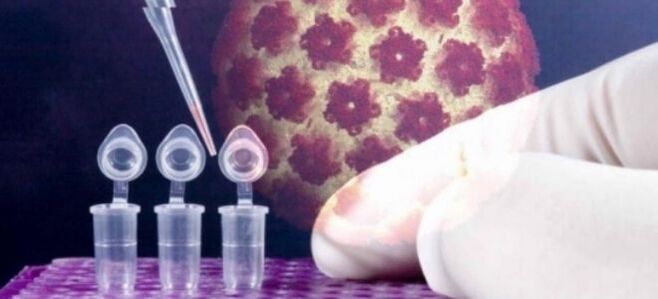
In the presence of symptoms and signs of illness, doctors prescribe many laboratory tests to confirm the hypotheses and make a diagnosis. In the appointment list, patients can find an HPV test: what it is, why and when it is prescribed - not everyone can answer.
What is HPV?
The human papillomavirus, HPV, is a whole group of infectious diseases that resemble viruses that are widespread. Scientists know more than 100 types of this virus and not all of them are dangerous to humans. Most are imperceptibly present in the body for a long time, causing transport. However, about 14 types of this virus are oncogenic - they cause the development of malignancies. When diagnosing, doctors always pay attention to the type of HPV, its oncogenicity, which determines the further actions and the nature of the treatment.
Human papillomavirus - types
The papillomavirus is usually divided into types according to the risk of developing oncology. Considering this factor, there are three main groups of HPV:
- Non-oncogenic- never causes the growth of malignant tumors.
- Low oncogenic riskmay, under certain conditions, cause the development of cancer: 6, 11, 42, 43, 44.
- High oncogenic riskWhen infected with these types of HPV, it is difficult to prevent the development of malignancies. Oncogenic human papillomaviruses: 16, 18, 31, 35, 33, 45, 58, 59, 52.

How is the human papillomavirus transmitted?
Knowing how the papilloma virus is transmitted can reduce the risk of infection. In practice, however, this is difficult to avoid. In the vast majority of cases, transmission occurs at the onset of sexual activity: sexual intercourse is the main mode of transmission of the virus. It can also be transferred during a kiss, when there are small cracks and scratches on the surface of the lips. You can also get infected if you break the rules of hygiene when visiting public places:
- saunas;
- pool:
- baths;
- and also when you use someone else's toothbrush, towel, razor.
Infection can also occur when the baby crosses the mother's infected pathways during childbirth. Experts do not rule out the possibility of transmitting the virus through contact: it is unstable, but it can maintain some activity.Among the factors that cause HPV infection:
- early onset of sexual activity.
- large number of sexual partners.
- sexually transmitted infections;
- reduced immunity.
Human papillomavirus - symptoms
The human papillomavirus can be invisible to the body for a long time. The incubation period, according to experts, can last from 2 months to 2 years. The disease progresses imperceptibly: there are no clinical symptoms and the main diagnostic methods show the rule. One in three patients, thanks to their immune system, recover within 6-12 months from the time of infection.
The clinical picture of HPV damage in the body is limited to the appearance of skin formations. Patients notice papillomas, warts and warts on their skin. Their location can be different and corresponds to the place of penetration of the virus in the body: genitals, hand surface, lips. These formations resemble papillary growths, sometimes outwardly resembling cauliflower. The estuaries are painless, but with friction and injury, they can cause pain and bleeding.

Why do I need an HPV test?
Having talked about the virus, let's move on to information about the HPV test: what kind of research it is, how it is performed and in what cases it is prescribed. First, we note that if human papillomavirus is suspected, the analysis helps to confirm or disprove the hypotheses. This type of research has the following objectives:
- identification of high-risk oncogenic HPV.
- confirmation / denial of persistence of a particular type of HPV.
- cancer risk assessment in patients with cervical epithelial dysplasia.
In addition to the named reasons for the test, the HPV test (what it is - indicated above) may occur in the following cases:
- Primary screening for cervical cancer in women over 30 years of age.
- Evaluation of the results of the performed surgical treatment of the intraepithelial neoplasm.
- Doubtful results of cytological examination of gynecological smears.
What tests should I do for HPV?
There are several methods for determining the presence of papillomavirus in the body. However, in most cases, doctors resort to PCR. If it is necessary to pass an HPV test, patients undergo this test directly. Various biological body fluids can be used as test material:
- blood;
- urine;
- amniotic fluid (when diagnosing a disease during pregnancy).
When talking about HPV analysis, what it is and how it is performed, it is necessary to note the possibility of studying tissue material. Thus, during the colposcopy, the doctor carefully examines the mucous membrane of the cervix. The presence of small papillae in them is direct evidence of HPV damage in the body. For confirmation, a small piece of tissue is taken under a microscope to rule out malignancy.
HPV diagnostic methods
The diagnosis of HPV is a set of measures aimed at detecting the presence of the virus and determining its type. The following techniques are used for this purpose:
- Digene test- modern accurate method. With its help, it is possible to determine the concentration of the virus in the body, its type and oncogenicity. Research material is the scraping of the mucous membrane of the urethra or vagina. Often used in conjunction with cytology.
- PCR diagnosis of HPV- a simple and affordable diagnostic method that is widely used. The material used is the patient's blood or urine. It presupposes the detection of viral DNA traces in the sample.
- Cytological examinationexamination of the coating under a microscope. The evaluation criterion is the presence of modified cells in the smear - dyskeratocytes and celiac cells.
- Detection of antibodies against HPV- Helps detect the infection from the virus in the early stages. The disadvantage is that it is not possible to determine the concentration and type of virus.
- Histological examination - examination of a sample of the affected tissue to determine the type of HPV and its oncogenicity.

Human papillomavirus - how to do the test?
Before the examination, and even when the referral is issued, the doctors tell the patient in detail how the HPV test is done in a specific case. Depending on the test methods and materials used, the analysis algorithm may differ. Preparing for research is very important. Proper application of all points of the preparatory measures allows you to obtain objective results of the analysis and eliminate the need for repeated application.
Preparing for HPV analysis
Before being tested for HPV, a patient must meet a number of conditions. In this case, the research method and the type of material to be analyzed are crucial. Represented by:
- blood;
- urine;
- a swab from the vagina or urethra.
Depending on the type of biological fluid under study, the patient is given recommendations on how to prepare for the analysis the day before. The task of the examinee is to fully follow the rules of preparation. This will prevent false results, and in some cases false positives, when the result indicates the presence of HPV in its absence.
HPV blood test
Speaking of how to get the HPV test, it should be noted that in most cases the patient's blood is used for this. The study is performed on an empty stomach: 10-12 hours before the expected time of taking the material, the patient is not allowed to eat; as a drink, you can use plain water without gas. 2-3 days before the day of the analysis, the consumption of alcoholic beverages, fatty and snacks is prohibited. Only in this case, the diagnosis of HPV with blood will allow you to get accurate test results.
HPV smear analysis
This method is most often used to examine the fairer sex. Before women get tested for HPV, they prepare for that test. The doctor introduces the patient in detail to all the rules of preparation. In this process, the following important points can be highlighted:
- A smear is taken before the start of the antibiotic course or 2. 5 weeks after the end of treatment.
- On the day of sampling, it is forbidden to use the toilet of the external genitalia using chemical hygiene products.
- It is forbidden to wash, to enter vaginal suppositories.
- One day before receiving the material, you should avoid sexual intercourse.
- It is ideal to do an analysis in the middle of the cycle, it is forbidden to conduct a study during the ovulation period.

Decoding of HPV analysis
Only a doctor can properly decipher the results of an HPV test. The specialist evaluates not only the quantitative value of the indicators, but also the clinical picture, possible signs of infection. Obtaining a complete picture of what is happening helps in choosing the right drugs and in choosing effective treatment methods. At the same time, it is important to take into account the seriousness of early diagnosis and treatment: with the age of the patient, the risk of developing malignant neoplasms increases.
Quantitative analysis of HPV
When an HPV test is performed using quantitative analysis, the expression includes the determination of the virus concentration at the time of the study. This helps determine the right tactics for managing the patient. Real-time PCR (RT-PCR) measures the amount of HPV DNA in a test sample. This is necessary for the continuous dynamic monitoring of a specific type of human papillomavirus.
However, even those who know about HPV analysis, what it is and how it is performed, cannot independently decipher the results. This should be done in conjunction with the patient examination and other examinations. During the evaluation, the experts adhere to the following interpretation of the indicators:
- lg< 3- the risk of developing dysplasia is low.
- lg 3-5- clinically significant result, there is a risk of developing cervical dysplasia.
- lg >5- high probability of dysplasia, probably the initial stage of the disease.
HPV quality analysis
High-risk oncogenic HPV analysis is performed using this technique. Helps identify 16th and 18th types of HPV. These forms of the virus often cause female genital cancer and squamous cell carcinoma, genital warts, and cervical dysplasia. HPV DNA detection efficiency reaches 98%. The conclusion suggests an indicative answer for each type of virus. There are two possible outcomes: found / not found.














































































